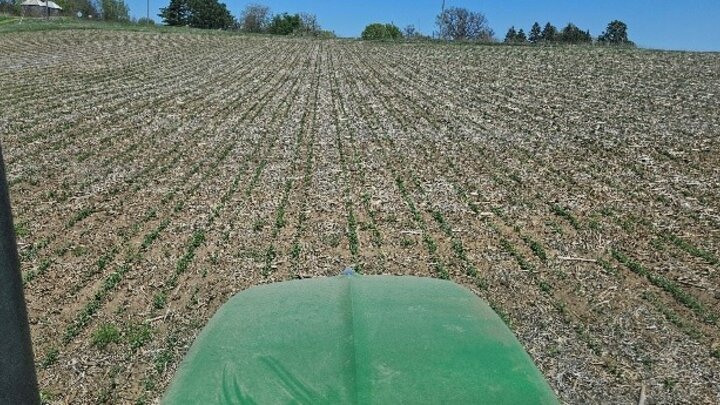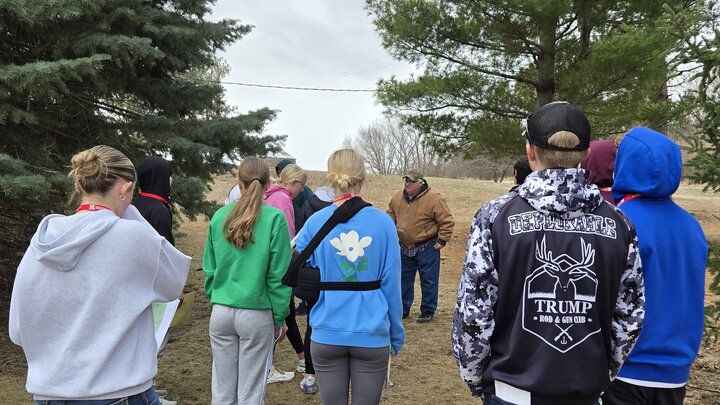As the 2025 planting season comes to an end, we’re pleased to report the success of planting our corn, soybeans, and a portion of wheat. Of these crops, many are dedicated to active research, encompassing efficacy trials, nutrient management, water quality, and manure application studies. We still have 6 research acres to plant. Of these six acres, two are our rootworm trap crop that has been in this location since the 1970’s. We’ve got a full slate of trials lined up this year, exploring a variety of research topics such as:
Soils:
- 4R’s of Nutrient Management Study
- Nitrogen Source Application
- Long Term Tillage, N-Rate and Cover Crop Study (Since 1986)
- Pivot Bio Study
- Proven40 Study
- Organic & Inorganic Fertilizer, Woodchips, and Cover Crops Irrigated & Dryland Study
- Swine Manure Application Study
- Cover Crop Planting Method and Termination Time
Corn Plant Pathology:
- Irrigation Height Effects on Tar Spot
- Fungicide Efficacy Trials
- Tar Spot
- Southern Rust
Entomology:
- Hilling to Prevent Soybean Gall Midge
- Vectors of Small Grain Diseases
- Suction Trap
- Light Trap
- Rootworm
Soybean Plant Pathology:
- Frog-eye Leaf Spot
- White Mold
- Fungicide Efficacy Trials
Bulk Farm:
- In-Season Nitrogen Reduction
- Winter Pea Demonstration
Great Plains Heifer Development Center:
Author: Connor Biehler, Beef Systems Associate Extension Educator
At the Great Plains Heifer Development Center, located at the UNL Haskell Ag Lab, we have bred each of our 169 heifers as of June 6, 2025. Prior to being bred the heifers we synchronized using a 7 and 7 breeding protocol. Earlier this spring the heifers were divided into three breeding groups: late-April, mid-May, and early June. The first group is scheduled for pregnancy checking and will be prepared for rebreeding soon. This program aims to optimize heifer development and reproductive efficiency. We appreciate the continued support and look forward to sharing more updates in the coming months.
In-Season Nitrogen Reduction
Author: Michael Kurtzhals, Research Technologist II
In effort to meet our In-Season Nitrogen Reduction goal and improve our nitrogen use efficiency, the Haskell Ag Lab Farm is continuing to follow the 4R’s of Nutrient Management (Right Source, Right Time, Right Rate, and Right Placement) and implementing some changes. In the past, we have split our nitrogen application into two passes: pre-plant and in-season. For preplant we use UAN 32% with our herbicide regimen to improve burndown and get the initial nitrogen down. This gives us a blanket rate of around 1/4 of total nitrogen applied.
For the in-season application (~V6-V8 corn growth stage) we apply UAN 32% using a knife rig to inject the nitrogen directly into the soil. We also utilize a sprayer with a rate controller and a 40’ boom equipped with drop nozzles. The drop nozzles help us by placing the fertilizer beneath the canopy, reducing the risk of leaf burn and improving efficiency.
While continuing our current practices we have added a few new approaches that will help us achieve this goal. First, we sampled all our corn acres early this spring. Once we received our analysis, we put the nitrate levels into the UNL Nitrogen Calculator giving us an idea of the optimal amount of nitrogen we will need to apply. The analysis also allows us to see if we need to apply any other macronutrients.
Later this season we will fly our corn acres with a drone using NDVI (Normalized Difference Vegetation Index) technology around the V5-V6 corn growth stage. This will give us a real-time snapshot of nitrogen demand in each field, just in time for the second application. With this data, we can tailor our nitrogen rates to meet each field’s specific needs, helping us avoid both overapplication and underapplication. We will be using our rate controller along John Deere Operations Center to create prescriptions for each field.
The benefit of improving our nitrogen use efficiency and aiming for our In-Season Nitrogen Reduction goal we can minimize nitrate leaching, be reactive instead of proactive when it comes to nitrogen management and continue following UNL recommendations. For UNL recommendations please view the following publications: In- Season Nitrogen Management for Irrigated Corn, Nutrient Management Suggestions for Corn, and UNL Nitrogen Calculator.


